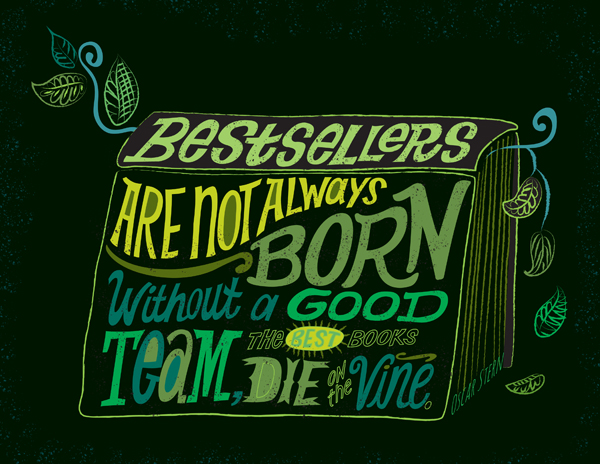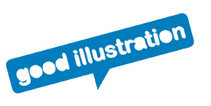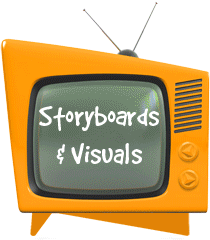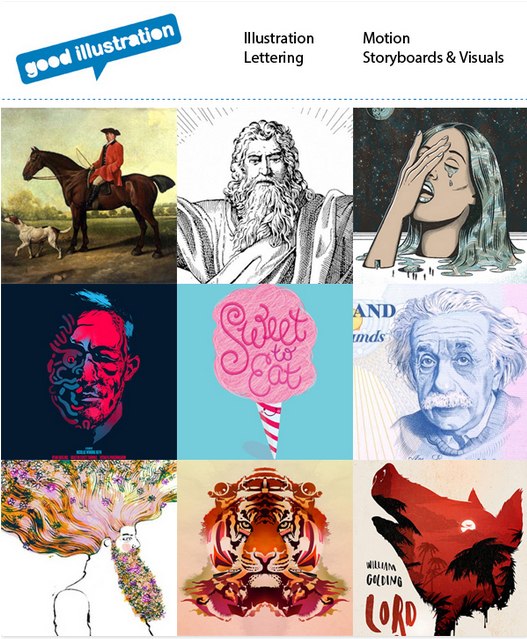Tell us about your career in publishing to date including how you came to your current role, Creative Director at Hachette Book Group.
I started working at Ballantine Books (Random House) in their in-house advertising department. It was just when the MAC was making it’s way into designers hands. So I was lucky to have one foot in the world of markers, ruling pens, mechanical boards and silkscreen comps, while entering this mind-blowing world of digital design. After working in Random House a number of years, I moved to Warner Books (now known as The Hachette Book Group). It was a great fit as they have a very robust in-house ad agency.
During your career, you have masterminded advertising campaigns for some of the world’s best selling authors. Tell us about the campaign you are most proud of.
I would like to say the last one I did, but more recently we did a full blown campaign for Malcolm Gladwell for this new book David and Goliath. The challenge was to make it simple but make it big. So there was very little copy, and we kept very simple and iconic. We concepted a bunch of teaser ads in The New Yorker, New York Times Book Review, billboards and bus sides.
Another campaign I’m proud of was unplanned at first but once we realized how big this book was going to be, we did a complete crash campaign was for The Lovely Bones. We very quickly put together a full print and TV campaign and the book became a huge bestseller. That’s a thrill, when you do great creative AND the book hits big. Everybody is happy.
I have a saying that, bestsellers are not always born, they are made. Without a good team, the best books can die on the vine.

Hand lettering by Jill Howarth, represented by Good Illustration
You were behind the creative team that produced the book trailer for Abraham Lincoln Vampire Hunter, one of the most successful book trailers of all time. Tell us how the idea for this project came about.
I have to give much of the credit to my colleague Brad Negbaur for getting in touch with the director Adam Reid and making this happen. The real success of this project was the teamwork. We were originally asked to do a trailer that would beat anything out there. We were tasked to hit a home run. Given the subject matter of the book, we thought we could get a little crazy but still do the book justice. We all believed in it and were passionate about it (and it shows). There was a lot of preproduction being done. The hardest part was getting the budget to do this right. A lot of pleading and selling this thing went on. The entire shoot lasted ONE DAY! Adam had two sets going on at once. We hired an actor whose only job is to be Abraham Lincoln: Michael Krebs. Once the editing process went on, Brad and I had to play “the suits” and be the ones to leave some great scenes on the floor. We really tried to keep this taut and sell the book. The real success of this project was the teamwork. Everyone worked late and under budget to make this happen. Also we had a great publicity team that spread the word about this book trailer.
Give us an insight into the creative workings of the Hachette Book Group, how do you approach new briefs and who is the team behind it all?
We do a huge volume of work. We could be doing up to 5 TV spots in a month and dozens of print ads and a barrel of web ads. So we tier our ads and really give the big campaigns extra love. The thing about book publishing is that the budget is mostly spent on the package (aka book cover), then the ad buys and lastly, the creative. If we have a great package, that can help visually and we just have to get great copy. So we are used to working quickly with very low budgets.
The challenge for creating TV ads is that you are selling an idea, a story. If you are lucky, your author might be considered a brand and that gives resonance. How do you distill 300 pages of story into a message and often with only fifteen seconds? Far worse, you don’t want your viewer walking away from the spot thinking it’s a new movie or TV show.
As for the process, my colleague Brad and I will get together to conceptualize. Sometimes, I’ll have a visual concept first or Brad will create copy first. Sometimes I might have a copy idea or Brad will have a visual concept. Then, depending on budget, we might do a sound stage shoot, or location shoot but often it’s a combination of stock and art. Before we get too deep, I’ll board it out and since our budgets are low, it’s very important to make sure the boards are airtight. If we can’t do it, I can’t show it.
Some campaigns (TV, print and web) I will concept and execute myself but more often I have a great team of Art Directors and designers who dig in deep and do good work.
Who would you highlight as some of your greatest professional mentors?
My first mentor was Charles Bjorklund. He hired me at Ballantine and challenged me creatively. I did 3D design (making designs out of paper for packaging), print, web pages, screen savers, digital, and TV. I wanted to learn everything and he made sure I did.
What would be your dream project?
Maybe something that isn’t a book, but something equally intangible and exciting.
What does your creative workspace look like?
Very messy. Lot’s of clutter.
Who or what inspires you creatively?
Everything. The way the light hits the New York skyline at dusk. The mish-mash of cultures in my neighborhood. Recently, I was captivated by the many hand-painted signs in the Dominican Republic. They were naïve and simply beautiful. A great book inspires me. Rodchenko. Matthew Barney’s Cremaster Cycle. Goya. Working with a great team is inspiring. Great advertising. Too many things to list.
What’s the most interesting development in book publishing right now?
Book publishing has entered the digital mainstream and I hope that publishing can bravely embrace that. That also means taking risks but never forgetting what we are “selling”. A book is still a book. Book publishing has always been a very conservative industry but now it has to change and not lose it’s soul.
What advice do you have for aspiring young creatives looking to make their mark in book publishing?
Get your chops up, try everything, take risks and learn how to pitch your ideas. Many of the people making decisions are not visual thinkers, they are authors, agents, publishers and they are word people – verbal people. It’s very important to be able to communicate your visual ideas with your clients.
Learn how things work. Not in an abstract, I-read-it-on-a-web-page, but by getting your hands dirty. Get some practical experience. Great ideas aren’t always enough, you have to be able to execute them.











